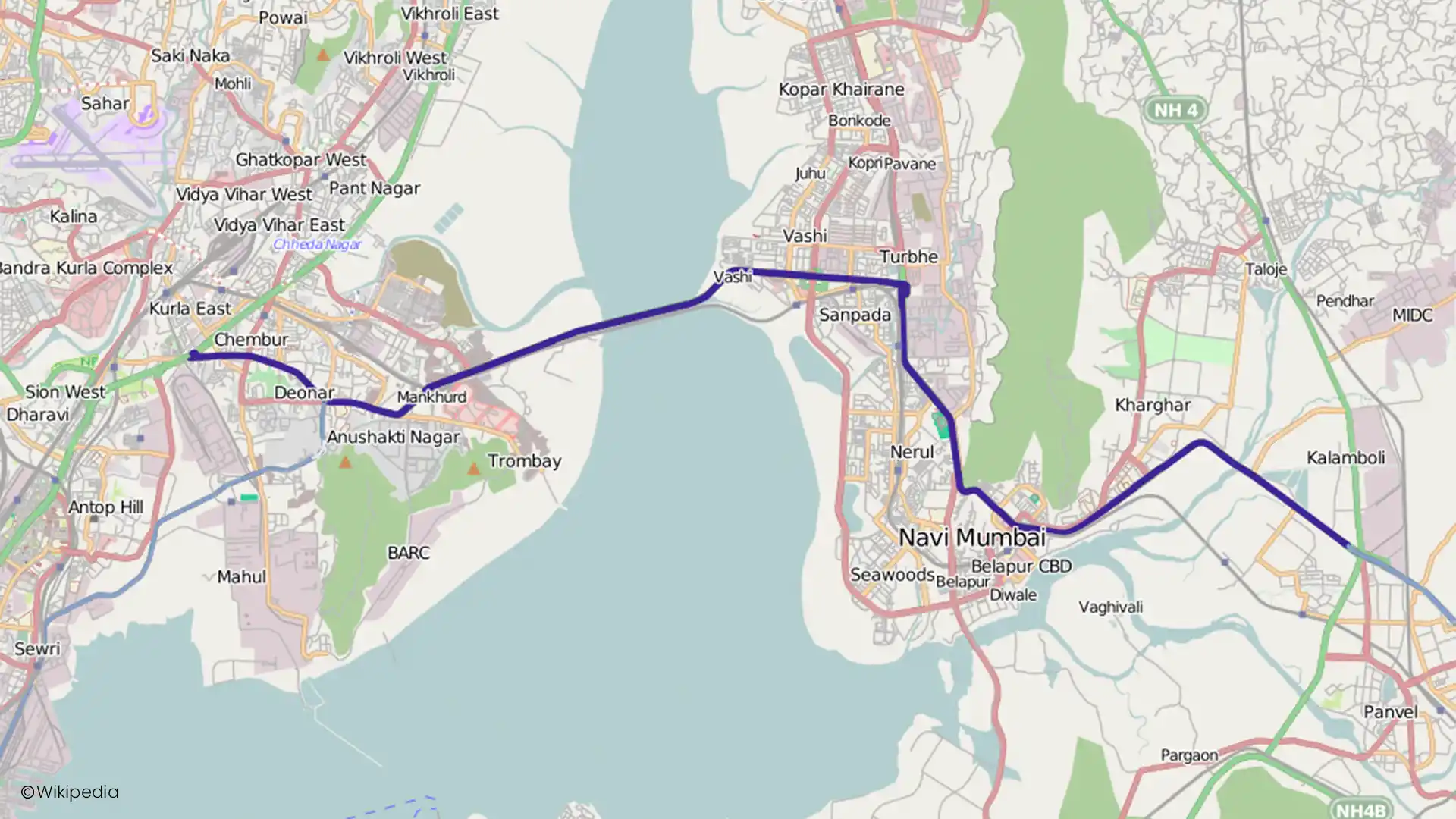Sion Panvel Expressway: Route, Map & Factors Led to Surge in Real Estate
Table of Contents:
- Sion Panvel Expressway: Overview
- Sion Panvel Expressway Impact on The Real Estate
- Sion Panvel Expressway: Route
In the vibrant tapestry of Mumbai's urban landscape, there exists a vital thread that weaves together the city's hustle and bustle with the serenity of neighbouring regions—a thread known as the Sion Panvel Expressway. It is a remarkable roadway that is used not just as a transportation route but also to connect Mumbai to its adjacent areas. The impact of the Sion Panvel Expressway has helped transform the way people travel, trade, and connect.
Today, in this article, you will discover all about the Sion Panvel Expressway along with its map, route, and so much more.
Sion Panvel Expressway: Overview
The Sion Panvel Expressway is a collaborative effort in maintenance overseen by the Maharashtra State Road Development Corporation, the Maharashtra Public Works Department, and the Municipal Corporation of Greater Mumbai.
Initiated in 2009 under the build-operate-transfer (BOT) framework with a substantial investment exceeding INR 1,220 crores, this expansive 10-lane expressway was successfully brought into operation in 2014. Today, it proudly holds the status of being one of the most heavily traversed roads within the Mumbai Metropolitan Region.
The 25-kilometre-long Sion Panvel Expressway connects Sion in Mumbai with Kalamboli Junction in Panvel through Navi Mumbai. It is one of the busiest roads in the Mumbai Metropolitan Area and connects the city via NH-4.
Don’t Skip Reading: Longest Expressway in India: Route Map, Key Features, Toll Rates
Sion Panvel Expressway Impact on The Real Estate
The surge in property prices along the Sion Panvel Expressway can be attributed to several key factors:
Improved Connectivity: The Sion Panvel Highway has significantly enhanced connectivity between Mumbai and its neighbouring regions. With reduced travel time, it has become an attractive option for commuters, leading to increased demand for housing and commercial spaces along the expressway.
Infrastructure Development: The expressway has spurred infrastructure development in the region, including better roads, public transportation, and utilities. These improvements have made the area more livable.
Proximity to Mumbai: The expressway's proximity to Mumbai's employment hubs and business districts has fueled demand for residential properties.
Infrastructure Investment: The development of infrastructure and amenities along the expressway, like shopping centres, entertainment facilities, and parks, has made the area more appealing to property buyers.
Investment Opportunity: Many real estate investors view properties along the Sion Panvel Expressway as a promising investment opportunity due to the potential for future appreciation.
Below are some of the localities along the Sion Panvel Expressway that have seen a rise in property prices:
Mumbai
Navi Mumbai
Trombay
Kalamboli
Mankhurd
Kamothe
Deonar
Kharghar
Chembur
CBD Belapur
Ghatkopar
Nerul
Turbhe
Don’t Skip Reading: Can India’s Expressway Change the Dynamics of Real Estate Market?
Sion Panvel Expressway: Route

Source: Wikipedia
As per the Sion Panvel Expressway route, it passes through three major cities: Mumbai, Panvel, and Navi Mumbai. The Sion Panvel Expressway's importance is further underscored by its numerous junctions with key state highways. Specifically, it links with the Eastern Express Highway at Sion, intersects with the Thane-Belapur Road in Turbhe, and ultimately reaches its termination point at the Mumbai-Pune Expressway at the Kalamboli Junction of Panvel. Below, you will find the Sion Panvel Expressway route map.
Conclusion
The Sion Panvel Expressway has had a profound impact on the real estate sector. This major infrastructure artery has significantly reduced travel time. Furthermore, the improved connectivity it offers to Mumbai and other major cities has driven up demand for both residential and commercial properties.
In addition, the expressway's strategic location has made it an attractive investment opportunity, drawing real estate developers and investors eager to capitalize on the region's burgeoning growth.
Don’t Skip Reading: Exclusive Details: Samruddhi Mahamarg- Longest & Fastest Expressway
Recent Articles
View All